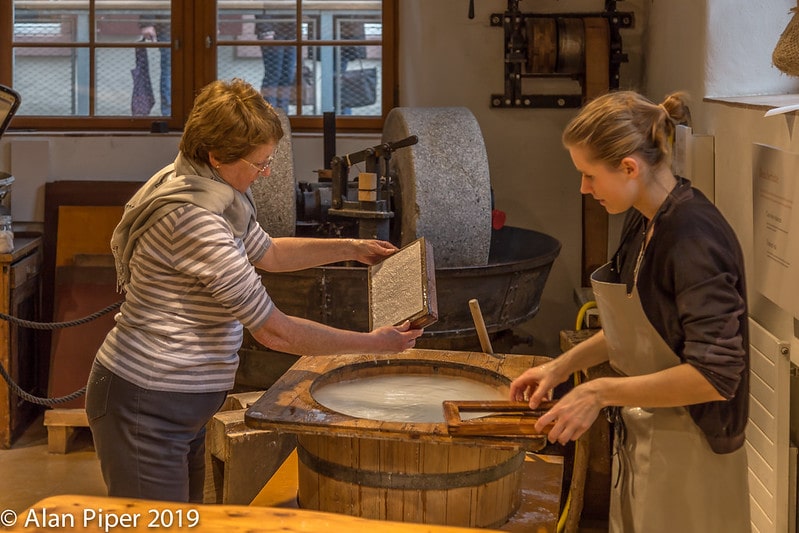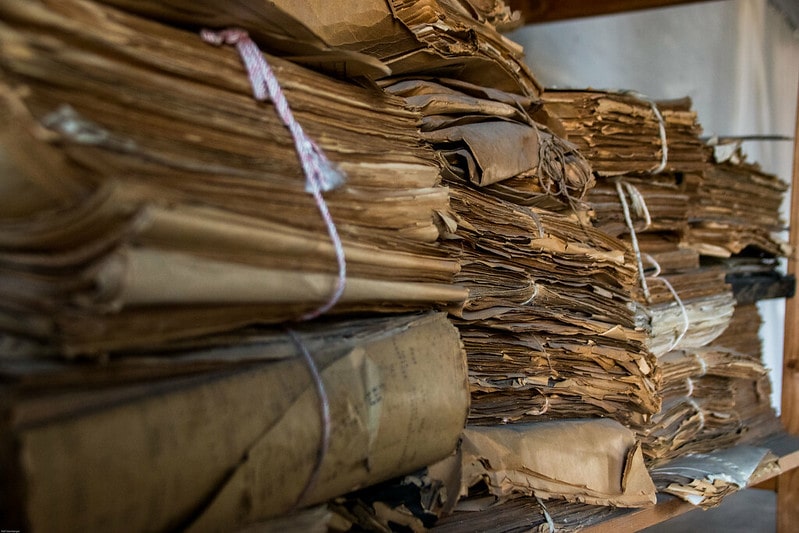Last updated on June 29th, 2021
Paper is a thin sheet material. Nowadays, it is usually produced by machines however initially it was hand manufactured. It is usually made of cellulose fibres formed on a wire screen from water suspension. We use paper daily, whether at home for jotting down the shopping list, at school, or work for filing reports. The form surrounds us literally, but how much do you know about it? Here is a collection of 25 facts about paper.
1. Paper was invented from hemp by the Chinese, around 100 B.C. Later, they started creating paper using other forms of plant fibers such as bamboo and tree bark. Prior to the invention of paper, papyrus served as a writing surface.
2. The Chinese also are credited with being the first people to use paper currency and toilet paper.
3. The production of the paper focuses on softwood trees that account for approximately eighty-five percent of the form. The wood pulp in softwood trees contains cellulose fibers and is most preferred since they can produce adequate strength for paper.
4. The favorable softwood trees for papermaking include pine, fir, and spruce. Trees come in varied sizes, making it difficult to establish how a single tree can produce many sheets of paper. However, on average, one pine tree can make around 80,000 sheets of paper.
5. It can take five liters of water to make one sheet of paper. Although water and writing may sound like a bizarre combination, ninety-nine percent removal of water will make the remaining one percent paper the way we see it.
6. You can put paper into seven different categories. These are printing paper, writing paper, drawing paper, wrapping paper, handmade paper, blotting paper, and specialty paper.
7. Paper-making was a huge secret the Chinese kept to themselves until the sixth century when the idea was brought to Japan by a Buddhist monk called Dam Jing. The Japanese quickly learned this tactic and began making the valuable item using pulp obtained from mulberry bark.

8. It is believed that the knowledge of paper-making was later passed to the Arab world in 751 CE after the famous Battle of Talas. During this time, two Chinese who were paper-makers were captured as prisoners.
9. The paper-making technique employed by people of the Middle East tangled macerating and garnering rags in water to create homogeneous pulp, which would be sifted to obtain macerated fiber sheets. The sheets were then pressed, dried, and covered with a film of rice starch.

10. The idea of paper production and usage spread from the Middle East to Europe in the 13th Century. It was then that Europe established the first water-powered paper mills.
11. Much growth in paper industry took place in New York and New England during the late nineteenth century. For this reason, Holyoke and Massachusetts came to be known as ‘The Paper City.’
12. Philadelphia was an important center for paper-making in the nineteenth century as it had lots of specialty paper-makers such as manufacturers of roofing paper and wallpapers.
13. Mass communication began with the industrial manufacture of paper in the 19th Century. This was a result of the mass-circulation of newspapers and novels. During the same period, there was an explosion of literacy among the middle class.

14. The first monthly newspaper “Notizie Scritte,” was printed in Venice in the year 1556. The monthly publication would go for one Vatican coin known as Gazzetta thus the name ‘gazette’ can be used when referring to a newspaper.
15. Paper is widely recommended for packaging by manufacturers as it is appealing and easy to carry. For two-thirds of consumers, cardboard and paper-based packaging make items more alluring than other packaging materials.
16. Paper containers are bio-degradable and can be reused in many other forms such as fiber-boards. Therefore, people are encouraged to embrace them as compared to plastic containers.

17. Paper is one of the few truly renewable resources. Paper fibers can be recycled up to twelve times before they get too short for paper-making. Recycling paper makes it possible to save up to 0.4 hectares of forest. Furthermore, paper is made from trees, a renewable source.
18. Producing paper from waste paper is economical. 85% of the water used in normal paper production is saved when the paper is recycled as well as a significant reduction in water pollution. Recycling paper also means you saving trees. Statistics show that approximately 0.4 hectares of forest can be saved when a ton of paper is recycled.
19. The production of recycled paper contributes to cleaner air. Compared to the production of standard paper, recycled paper production reduces air pollution to up to 73%.
20. About two-thirds of the paper we use gets to be recycled.
21. Similar to the initial production of paper, the recycling process involves extraction. First, the recyclable paper is separated from the non-recyclable one; then, the recyclable paper is washed in soapy water. The soapy water cleans away the ink, glue, staples, and plastic films.
22. Paper production is energy-intensive. According to statistics, paper production is ranked top three of all manufacturing industries as the most energy-intensive. This however can be significantly reduced when paper is recycled.
23. During decomposition, paper releases methane, a gas more potent strong than carbon dioxide. Methane gas has a heat-trapping power 21 times more than carbon dioxide. Decomposing paper is therefore amongst the largest source of methane emission across the globe. In the event of recycling, such an issue is reduced.

24. Most solid wastes in landfills consist of paper. Paper represents up to 16% of solid wastes in landfills. The fact is, there is lots of paper being thrown away as waste instead of recycling. The end result is too much waste polluting the environment.
25. When paper decomposes in a landfill, it emits methane, a greenhouse gas that is more hazardous than carbon dioxide. Paper littering is more harmful to the environment.
26. Interestingly, the global paper consumption statistics reveal that printing is not the leading paper consumer. Packing and wrapping are significant consumers taking up to fifty-five percent of the total paper production.
27. Not all paper is made from wood. This might sound confusing right? But well, the first Chinese paper was made from cloth scraps and pieces of hemp material. Today, currency notes we use are made from cotton fiber, that’s why it is strong and more durable than normal paper.
. . . continue reading on the next page
